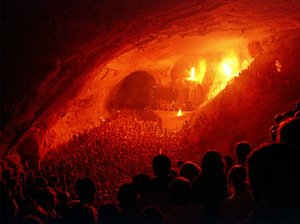
|
| ©Reuters |
Flames illuminate thousands of revelers in a cave in Zugarramurdi, Spain, during a 1998 Aquelarre, or Witch Coven.
Held on or near the summer solstice, the festival commemorates the alleged witches who used the cave in centuries past--many of whom died by fire during the Basque witch trials of the 1600s.
For millennia the summer solstice has been embraced as a time of rebirth and hope, and as a herald of abundant food and warm temperatures to come (summer solstice facts).
Falling this year on Friday, June 20, in the Northern Hemisphere, the longest day of the year is still regarded by many as a day of mystical and religious significance--and the cause for many a celebration.
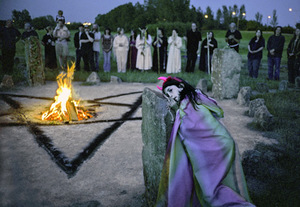
|
| ©Robert Mulder/Godong/Corbis |
With a pentagram burning in the background, a costumed girl rests during a 2005 pagan summer solstice ceremony in Milton Keynes, England.
Held every year during the full moon closest to summer solstice, the Milton Keynes celebration also features a bonfire and stone circle-staples of pagan and witchcraft festivities.
Modern pagans typically revere nature and center their revelries around season changes.
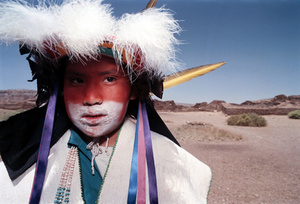
|
| ©Ben Chrisman/The Daily Times/AP |
A Hopi Indian boy rests after a butterfly dance during the 2003 summer solstice at the Chaco Culture National Historic Park in New Mexico. Performed by children, the dance is a prayer for rain and health, and a celebration of the butterfly's pollination of flowers.
For a few days around the summer solstice, the sunrise aligns with an ancient solstice marker in the park, which invites a different Native American tribe to perform each year. In 2008, the festival's dancers will be from New Mexico's Acoma tribe.
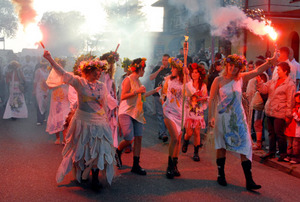
|
| ©Barbara Ostrowska/PAP/Corbis |
Swinging sparklers and garlanded with herbs, women parade in Jastarnia, Poland, during the 2006 summer solstice.
In central and eastern European countries, pagan solstice festivals often honor Kupala, the Slavic goddess of water, herbs, sex, and midsummer.
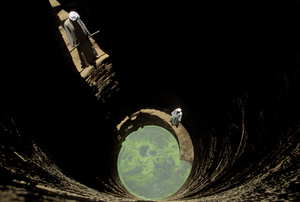
|
| ©Bob Sacha/Corbis |
Each summer solstice the sunlight floods the bottom of an ancient well near Aswān, Egypt, as shown in an undated photo.
During the solstice the sun is nearly directly overhead the city-a fact the Greek scholar Eratosthenes used to help calculate the circumference of Earth in the third century B.C.
The city's position just slightly north of the Tropic of Cancer-the circle of latitude that receives solstice sunlight at a 90-degree angle-skewed his calculations, but not by much.
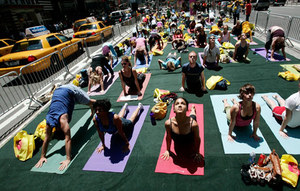
|
| ©Mario Tama/Getty Images |
It's mind over madness as New Yorkers greet the sun at the annual, all-day solstice yoga fest in Times Square in 2007.
Best known for a winter festivity-New Year's Eve-the vast intersection has hosted the summer stretch-a-thon since 2003, when just a handful of practitioners showed up. In 2007 more than 800 people registered.
The 2008 event will be held on June 21, the day after the solstice.
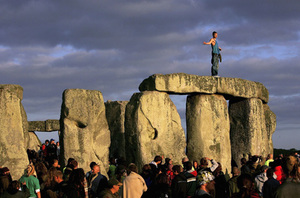
|
| ©Daniel Berehulak/Getty Images |
A reveler atop a horizontal block called a lintel welcomes the summer solstice sunrise at England's Stonehenge in 2006.
Aligned with the first rays of the summer solstice, the 5,000-year-old monument was likely a gathering site for longest-day celebrations - and still is.
The often raucous annual festival was banned in 1985 but restarted in 2000. The event now attracts roughly 25,000 people looking for a rare chance to touch the megaliths-though standing on top of them is decidedly against the rules.



Reader Comments
to our Newsletter